USA
History

History

Cities in USA
| Atlantic city | Boston | Dallas |
| Detroit | Las vegas | Memphis |
| Nashville | New york | Seattle |
Popular destinations USA
| Arizona | California | Florida |
| Hawaii | Utah |
History
First residents
The written history of the "New World" does not, of course, begin until the arrival of Europeans in 1492. Yet, tens of thousands of years earlier, people had been on the American continent. Between 20,000 and 30,000 BC. the first inhabitants of the North American continent came from Asia to present-day America. These people, mistakenly called Indians by Christopher Columbus, eventually spread across the continent, from the far north of Canada to the very tip of South America.
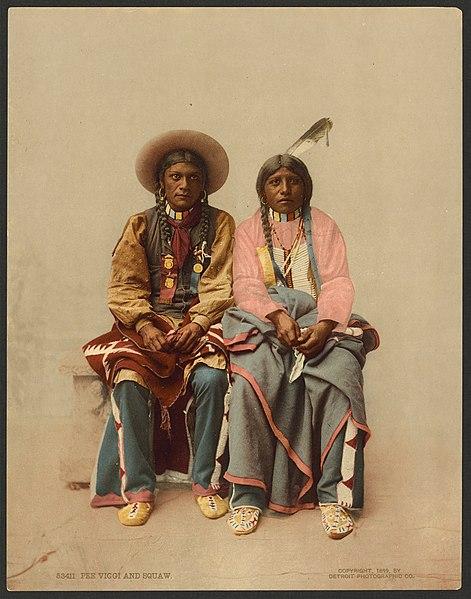 'Native Americans' end 19th century, USAPhoto: United States Library of Congress's Prints and Photographs division in the public domain
'Native Americans' end 19th century, USAPhoto: United States Library of Congress's Prints and Photographs division in the public domain
The original inhabitants spread from the west coast to the east coast and lived in it in many different ways. Indians on the west coast mainly lived from fishing, in the middle they mainly lived from hunting (bison). Remains of mainly agricultural communities have also been found.
Exact figures of the number of Indians are not known, but estimates range from 40 to 80 million.
Christopher Columbus and the Colonization of America
In 1492, America was discovered by the explorer Christopher Columbus, employed by the Spanish king. Before Columbus, Vikings had already arrived in America around the year 1000. Initially, the Spaniards only built some exploitation colonies, they did not have the authority to continue to live there. People especially hoped to find a lot of gold.
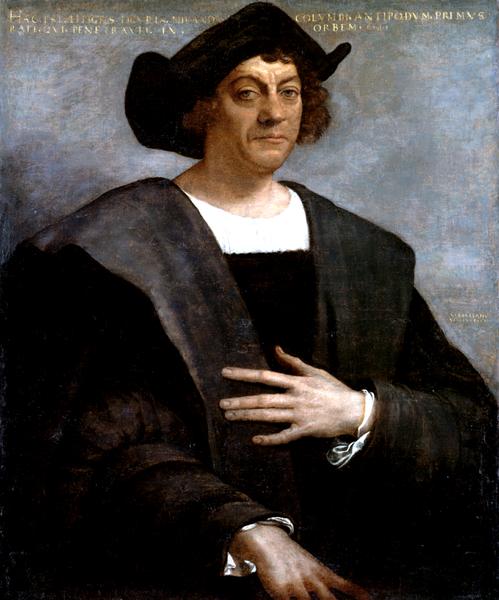 Christoffel Columbus, USAPhoto: Public domain
Christoffel Columbus, USAPhoto: Public domain
In 1565 the Spanish established the colony of St. Augustine in Florida, followed by the British with Jamestown in present-day Virginia. The first settlement colony arose in 1619 and the first women came to America. In the 17th century, the group of settlers grew rapidly, often at the expense of the original population. The Native American population was decimated by new diseases and attacks by the settlers, who considered the Native Americans to be savages.
In the early 17th century, the Spaniards had advanced a long way to the west and Santa Fe was founded in 1609 in New Mexico. The English entered the scene from the 17th century onwards, and they established a colony in Virginia in 1607. The Plymouth Colony in Massachusetts was founded in 1620 by the Pilgrim Fathers with their famous ship the Mayflower. In the years that followed, they were followed by the Puritans who founded Boston, also on the east coast.
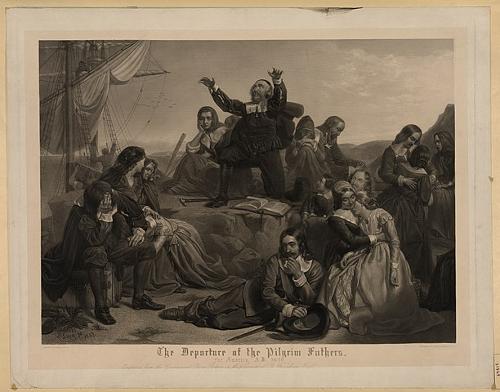 Departure scene from 1620 of Pilgrim Fathers to the United StatesPhoto: Popular Graphic Arts in the public domain
Departure scene from 1620 of Pilgrim Fathers to the United StatesPhoto: Popular Graphic Arts in the public domain
The Englishman Henry Hudson worked for the Republic of the United Netherlands. He discovered the river named after him and started building a settlement on the island of Manhattan, New Netherlands, in 1624.
In this way, the entire east coast was, as it were, divided between the various European superpowers. However, it soon became clear that England would become the dominant power in this part of America. New colonies developed from Massachusetts, such as Connecticut, Rhode Island, Maryland, Carolina, Georgia, and Pennsylvania. In 1664 the Dutch colony of New Netherland was also conquered and the English territory stretched from Canada to Florida. The Indian tribes that lived in this entire area were also subject to the English, often through bloody wars.
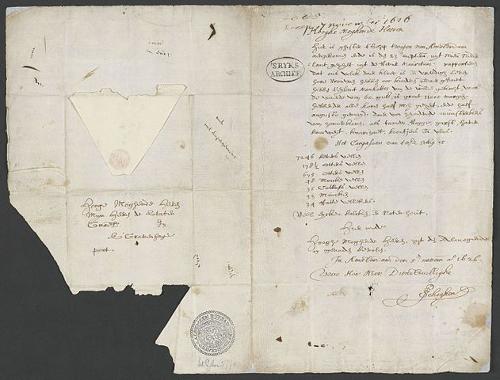 Manhattan sales deed (1626)Photo: George Schlegel lithographers in the public domain
Manhattan sales deed (1626)Photo: George Schlegel lithographers in the public domain
War of Independence
Initially, the differences between the various colonies, especially in economic terms, were very large. The North was an area of small farmers and traders, while the economy of the South was dominated by slavery-dependent tobacco, rice and cotton plantations. Because of the joint French enemy in Canada, they initially joined forces, which led to the conquest of Canada in 1763 after the so-called French and Indian War. However, the struggle cost England a lot of money and to refuel the treasury, heavier taxes were placed on the colonies.
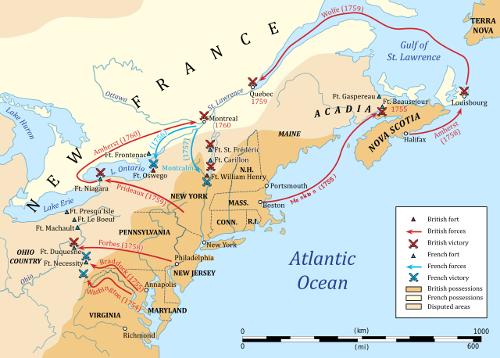 French and Indian war (1754-1763), USAPhoto: Hoodinski CC 3.0 Unported no changes made
French and Indian war (1754-1763), USAPhoto: Hoodinski CC 3.0 Unported no changes made
The opposition to this was obvious and resulted in a war of independence won by the thirteen colonies; At the beginning of the war, on July 2, 1776, independence was declared and on July 4, the Declaration of Independence written by Thomas Jefferson was accepted. The American War of Liberty was to last until 1783, and on April 19, 1783, the British acknowledged their loss at the Peace of Versailles and withdrew from the United States; the American republic was a fact. After France, the Netherlands was the second country to recognize the "United States of America" (1782).
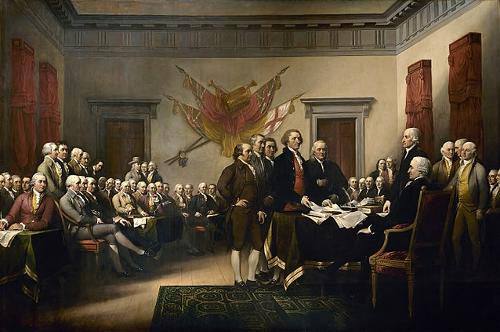 Signing of the Declaration of Independence, USAPhoto: US Capitol in the public domain
Signing of the Declaration of Independence, USAPhoto: US Capitol in the public domain
It turned out to be a utopia that the thirteen so different colonies would immediately form a unit. In fact, the only common thing was the “Articles of Confederation”, a kind of constitution which, in particular, confirmed the independence of the colonies. Furthermore, there was really only one joint body, the "Congress", which met only a few times a year. This loose union of states was burdened by large debts of war, declining trade and a lack of central authority. The so-called Federalists called for stronger authority and a better constitution.
In 1787 a new Constitution was indeed accepted, a difficult process that was only completed when a so-called “bill of rights” was added to the constitution. The "bill of rights" consisted of ten articles containing fundamental human rights. With the adoption of the new constitution, the thirteen colonies continued as a United States Union, and in 1789 George Washington became the first president, a hero of the war against the British.
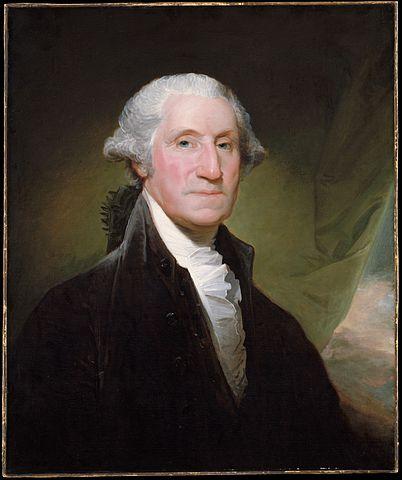 George Washington, first president of the USAPhoto: Metropolitan Museum of Art in the public domain
George Washington, first president of the USAPhoto: Metropolitan Museum of Art in the public domain
Consolidation (1787-1815)
The new constitution was initially satisfactory and Washington was supported by excellent employees such as Thomas Jefferson on Foreign Affairs and Alexander Hamilton on Finance. Hamilton advocated the trade and industry of the North and stood for a central government and sound financial policy. Jefferson, on the other hand, was a genuine Southerner who stood for the interests of the farmers in the South and for greater economic freedom and decentralized rights of the individual states.
With the creation of a National Bank, Hamilton received the support of President Washington, and his supporters were called the Federalists. Jefferson's supporters were called Republicans, but they were nowhere near as powerful as in later times. Washington was succeeded by federalist John Adams in 1797, but in 1800 the Republicans won the election and Jefferson became president, who was fairly authoritarian. For example, without consulting Congress in 1803, he purchased the Louisiana Territory from the French Emperor Napoleon, doubling the territory of the Union. He also anxiously tried to remain neutral in the European wars that were waged at the time.
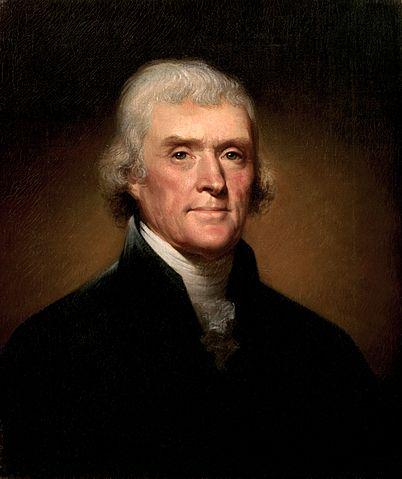 Thomas Jefferson, 3rd president of the USAPhoto: White House Historical Association in the public domain
Thomas Jefferson, 3rd president of the USAPhoto: White House Historical Association in the public domain
Under Jefferson's successor, James Madison, America entered a war with the British in 1812. The English achieved some nice victories, but with the Treaty of Ghent in 1814 the old situation was restored. After this war, America would manage to stay out of European politics for more than a hundred years. For domestic politics, it was important that the Federalists and the Republicans became one party: the National Republicans. In general, there was also a great sense of national unity, which is why this period is also referred to as the “era of good feeling”.
The president during this quiet period was James Monroe, who installed the Monroe Doctrine. This meant that America wanted to isolate itself from foreign policy (isolationism).
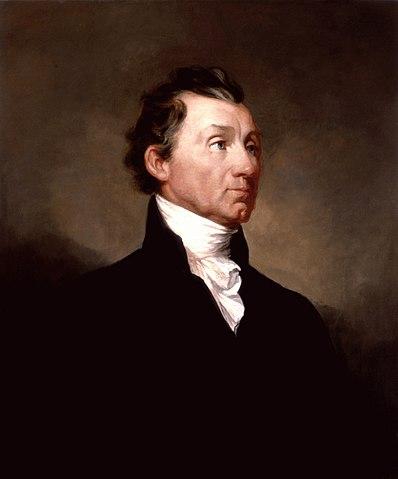 James Monroe, 5th president of the USAPhoto: https://www.whitehousehistory.org in the public domain
James Monroe, 5th president of the USAPhoto: https://www.whitehousehistory.org in the public domain
Frontier: the migration to the West
After the battle against the English won, the migration started to the west, and the so-called “frontier” gradually formed the new America. According to many, democracy in America originated here because everyone was equal and had to save themselves in a hard life. Many new states also emerged, including Kentucky (1792), Tennessee (1796), Ohio (1803), Louisiana (1812), Indiana (1816), Mississippi (1817), Illinois (1819), Alabama (1819), Missouri ( 1821), Arkansas (1836) and Michigan (1837).
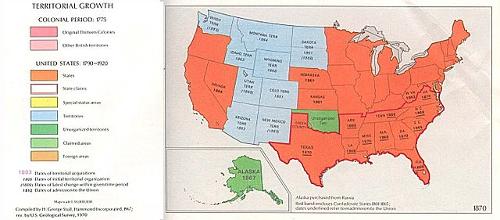 USA states around 1870Photo: Hoodinski CC 3.0 Unported no changes made
USA states around 1870Photo: Hoodinski CC 3.0 Unported no changes made
The sharper contrasts between North and South meant that whenever a southern state was admitted to the Union, a northern state would also be added in order to maintain balance in the Senate. At one point, the division between north and south could no longer be maintained when people penetrated further and further west. The ongoing expansion would even endanger national unity.
The great democratization
At that time, the democratic quality was not very high, because the right to vote was far from universal, and politics was only practiced by a small elite. Andrew Jackson came to power in 1828, who was preoccupied with a real democratization process. The people slowly opposed the elite and Jackson was on the side of the people. Jackson's party also changed names and was now aptly called the Democratic Party. The old elite then united in a new party, the Whigs, who opposed what they believed to be "King Andrew".
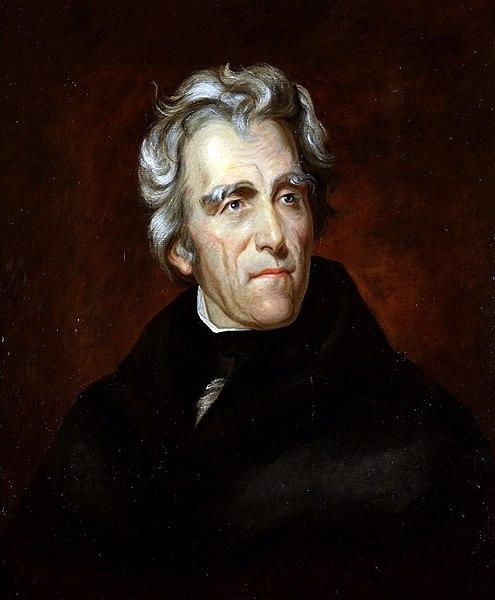 Andrew Jackson, 7th president of the USAPhoto: http://www.senate.gov in het publieke domein
Andrew Jackson, 7th president of the USAPhoto: http://www.senate.gov in het publieke domein
They again called for a strong federal government that was mainly concerned with the development of industry and the opening up of the western agricultural areas by connecting them to the industrial centers in the east. However, Jackson was an anti-monopolist, and the rights of the states and a free economy were paramount to him. Not surprisingly, popular Jackson was reelected as president in 1832 without much effort.
After Jackson stepped down in 1837, a major economic crisis broke out. During this period, universal suffrage was also introduced in almost all states, leading to far ahead of Europe.
The war with Mexico
During the migration to the west, only some Indian tribes offered resistance. Eventually, the south-west of the continent collided with Mexico, which had separated itself from Spain in 1821. Initially, thousands of settlers entered the Mexican province of Texas without any problems. At one point, the settlers prevailed and a conflict with the Mexicans arose in 1833, ultimately resulting in the proclamation of the Republic of Texas. The expectation was that America would immediately annex the new republic, but this did not happen until 1845. In 1846 the Mexicans tried to reclaim their territory, but this two-year war ended with total defeat for the Mexicans, even the capital Mexico City was occupied. In the Peace of Guadeloupe in February 1848, Mexico had to relinquish large tracts of land, including present-day Arizona, California, and New Mexico.
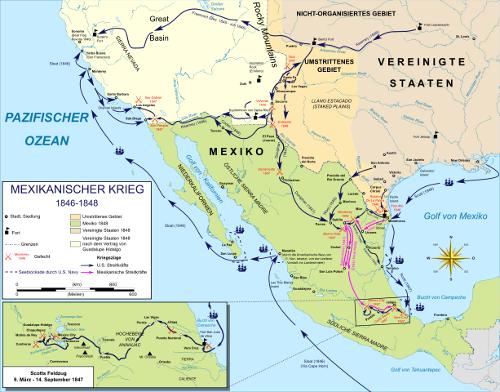 Mexican-American War (1846-1848), USAPhoto: Mexican–American_War-en.svg: Kaidor CC 3.0 no changes made
Mexican-American War (1846-1848), USAPhoto: Mexican–American_War-en.svg: Kaidor CC 3.0 no changes made
In 1846, an agreement had also been reached with the British on the northwestern border with Canada, all under the presidency of James Polk. Meanwhile, America had already become the primary trading power in the Far East after England, and it was they who forced the Japanese to open their ports to the Westerners in 1853. However, the constant contrasts between North and South would lead to a real civil war in the mid-19th century.
The struggle between North and South culminates in a Civil War
The South was still hostile to central authority, especially as the position of the South against the North became weaker. Ultimately, the whole problem would escalate through the slavery issue. The North had already abandoned this system around 1800, while the South relied heavily on slaves, especially cotton plantations. Northern abolitionists (advocates of the abolition of slavery) became increasingly fanatical in their plea for the abolition of slavery. The enlargement to the west made problems worse, such as California's accession to the Union, which was partly in the south and in the north. Often half-hearted compromises were made that would never be able to provide a real solution for long.
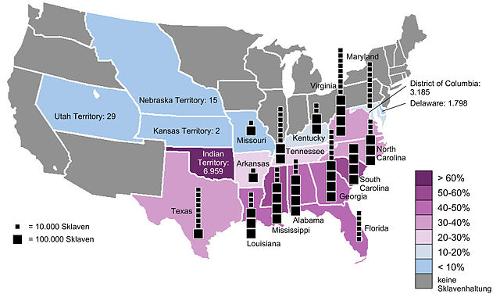 Overview slavery United States around 1860Photo: Stilfehler CC 3.0 Unported no changes made
Overview slavery United States around 1860Photo: Stilfehler CC 3.0 Unported no changes made
In 1852 Harriet Beecher Stowe's book "Uncle Tom's cabin" was published, making the American problem a world problem. In 1854, the Kansas-Nebraska Act proposed that the pioneers decide what to do with slavery. This did not work either, as fierce fighting ensued between supporters and opponents of the abolition of slavery. In 1857, some oil was thrown on the fire by the Supreme Court. This college determined that slaves remained property anytime, anywhere, even though a southerner moved north. In addition to the abolition of slavery, the northerners were also afraid of the free passage to the west for small farmers.
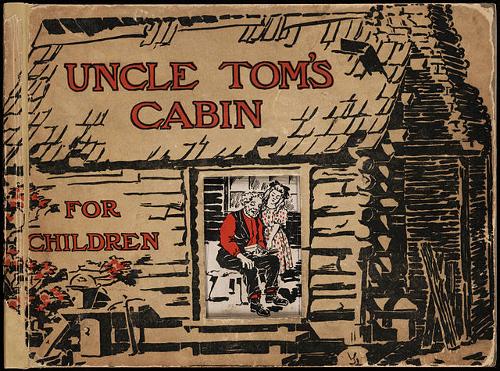 Uncle Tom's Cabin, important book about slavery in the USAPhoto: W. M. Rhoads in the public domain
Uncle Tom's Cabin, important book about slavery in the USAPhoto: W. M. Rhoads in the public domain
This position led to the dissolution of the Whigs party, again due to the major contradictions in opinion. The North's supporters then founded a new party, the Republicans, who also sought strong central authority. They therefore felt that Congress should decide whether or not to abolish slavery.
In 1860, the republican and notorious slavery fighter Abraham Lincoln became president, and that was the sign for eleven southern states to secede from the Union. The first shots were fired in April 1861 and the American Civil War was a fact. The North, led by Lincoln, won this bloody war in 1865. During the war, in 1863, the slaves were liberated by proclamation by Lincoln, and this was ratified by the constitution in 1865. On April 14, 1865, Lincoln was murdered by a southerner. The Civil War killed more than 600,000 people.
For Lincoln, the victory of the North was also proof that the Union belonged together and that a state could not just leave the Union. It was also important that the industrial North had won from the agricultural South, and after the war the irresistible boom of American industry began. In 1862, the West was also opened up to the settlers as free land through the Homestead Act.
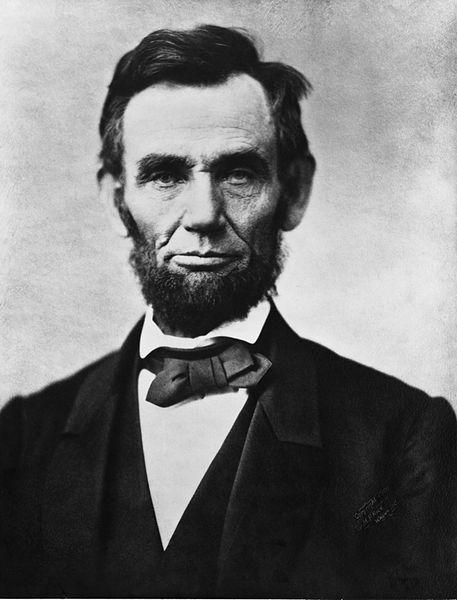 President Lincoln, USAPhoto: Alexander Gardner bdi (1821–1882) in the public domain
President Lincoln, USAPhoto: Alexander Gardner bdi (1821–1882) in the public domain
Reconstruction
Between 1865 and 1877, the South was occupied by Northern troops. The slaves were free, but were not given enough support to build an independent life. In 1877, the occupation and thus the reconstruction was discontinued.
After the Civil War, the Union recovered at the national level and the South at the regional level. Because the North fully focused on industrial development, the development of the South was ignored.
This position of the North turned out very badly for the blacks in the South, who were deprived of suffrage, among other things, and who often fell victim to segregation, racism and discrimination, the so-called "redemption" period.
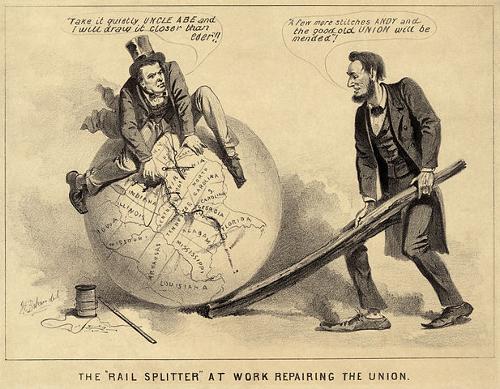 Cartoon With Abraham Lincoln and vice-president Andrew JohnsonPhoto; Joseph E. Baker in het publieke domein
Cartoon With Abraham Lincoln and vice-president Andrew JohnsonPhoto; Joseph E. Baker in het publieke domein
Industrial expansion
Politically, until the First World War in 1914, the United States was governed almost constantly by Republicans, who were primarily concerned with the industrial development of the North. The big boys among the industrialists such as Rockefeller, Carnegie and Mellon had gained so much power (also through corruption and extortion) that it was unclear who ruled the country, the great industrialists or the government in Washington.
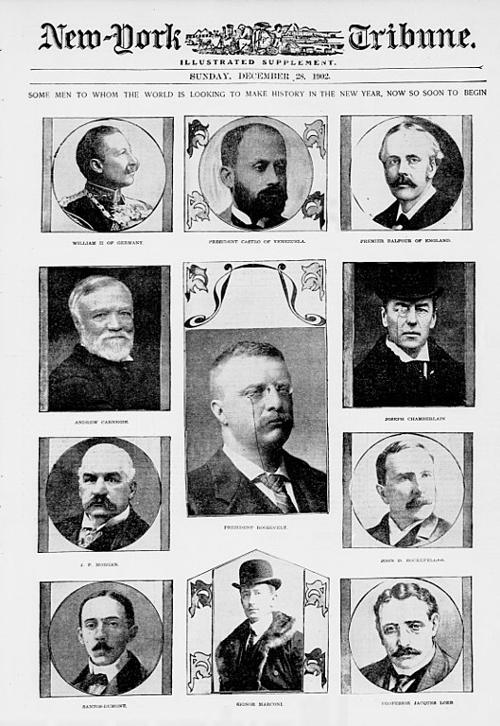 Important people at the start of the 20th century, e.g. Andrew Carnegie and John D. RockefellerPhoto: The Library of Congress in the public domain
Important people at the start of the 20th century, e.g. Andrew Carnegie and John D. RockefellerPhoto: The Library of Congress in the public domain
On the other hand, they also made the country great by founding universities and museums. Industrial development also led to many inventions (Edison, Bell). All this did not alter the fact that economically it often went very badly with crises in 1873, 1893 and 1907. Widespread corruption also caused the country to be in bad shape.
The great immigration
The strong industrial growth required a lot of extra labor, who had to come from abroad. Millions (1907: 1,285,349 !!) immigrants migrated to the United States and the population grew like crazy:
1800 5,000,000
1860 36,000,000
1880 50,000,000
1900 75,000,000
1920 105,000,000
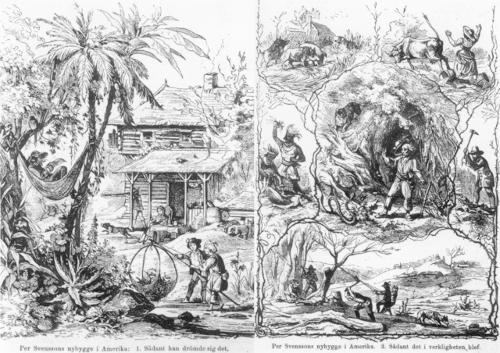 Swedish ant-immigration propaganda to the USAPhoto: Public domain
Swedish ant-immigration propaganda to the USAPhoto: Public domain
In the mid-19th century, the influx of immigrants got off to a good start, especially from Ireland, Germany and Scandinavia. After 1885, many immigrants from Southern and Eastern Europe also came, especially Italians and persecuted Jews from Russia.
In the big cities an anti-alien sentiment arose and the Chinese (1882) and Japanese (1907) were completely banned. Moreover, the industry no longer needed so many workers. In 1921 and 1924, immigration laws created quotas for the various nationalities with which they wanted to stem the flow of immigrants.
Political changes
At the end of the 19th century, a third movement in American politics, the Populists, emerged, consisting of disaffected farmers and workers. Later, this party was almost completely absorbed in the Democratic Party. In the early 20th century, there was a climate for political reform. After some hesitation, President Theodore Roosevelt, who took office in 1901, was an exponent of that idea of reform. However, he started his reforms too late and under his successor William Howard Taft, conservatives in the Republican Party regained the upper hand. In response, he founded his own party, the Progressives, and the split in the Republican party was a fact.
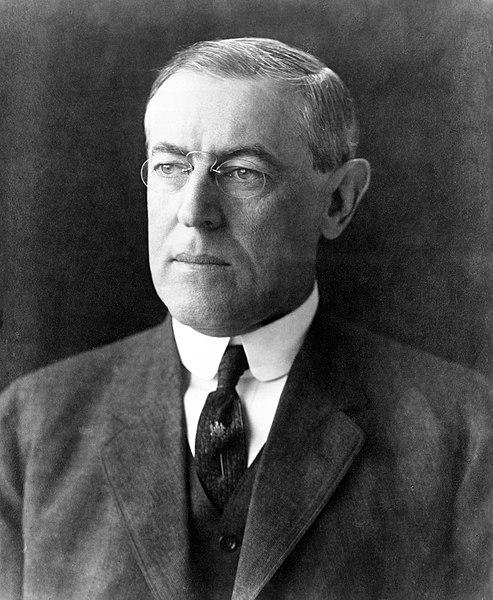 Woodrow Wilson, 28th president of the USAPhoto: Pach Brothers, New York in the public domain
Woodrow Wilson, 28th president of the USAPhoto: Pach Brothers, New York in the public domain
Because of this, Woodrow Wilson's Democrats were thrown into the presidency. Wilson himself was a true reformer, creating the situation where the Republican Party became conservative and the Democrats became the progressive party. The Democrats also became the party that called for a strong federal government that could make changes. Republicans, on the other hand, were more in favor of the rights of individual states. Because of this remarkable "exchange" of principle principles, the Democratic Party has long become the largest party in the country.
The completion of the West
The migration to the west also often resulted in bloody confrontations with the Indians. All treaties between the whites and the Indians were eventually violated by the whites, resulting in the Native Americans losing more and more of their land. Native American confidence in the whites hit rock bottom, and horrific atrocities were committed back and forth. The last major confrontations occurred in 1876, when General Custer was ambushed and massacred along with several hundred soldiers, and in 1890 when 200 Sioux Indians were killed in the Battle of Wounded Knee and fought the last major battle for freedom.
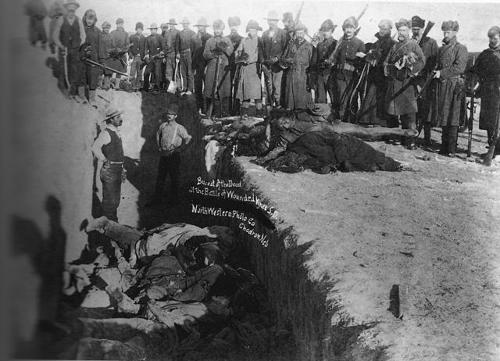 Wounded Knee: indians are buried in a mass grave, USAPhoto: Northwestern Photo Co. in the public domain
Wounded Knee: indians are buried in a mass grave, USAPhoto: Northwestern Photo Co. in the public domain
The physical resistance of the Indians was then broken and they were placed in reserves, often in desperate conditions. Many Native Americans, however, said goodbye to life in the reserves and tried, often in vain, to be absorbed into American society. The Bureau of Indian Affairs was established in 1934. From that time, more attention was paid to the reserves by the federal government, now with the participation of the Indians themselves. Since that time, the cultural identity of the Indians has been cherished again and, despite major economic and social problems, a clear national consciousness has emerged again.
American imperialism
After the American Civil War, the United States retreated to a fearsome isolationism that only diminished with the rise of industry. In 1875 a treaty was signed with Hawaii, in 1878 the Americans were given exclusive rights to the port of Pago Pago in Samoa, and in 1887 also to Pearl Harbor in Hawaii. In 1898, Hawaii joined the United States, and in the same year America entered Cuba in a war with Spain. The outcome of this war was that Cuba came under American custody. Later, America acquired the Philippines, Guam, Hawaii, and Puerto Rico, thereby becoming a colonial power.
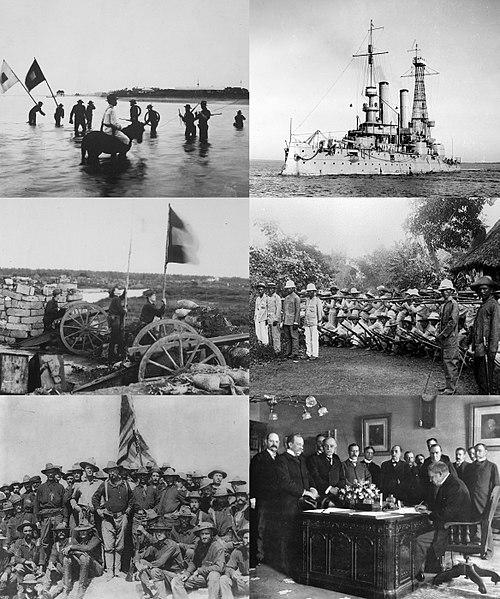 Collage photographs Spanish-American War, USAPhoto: Barbudo Barbudo CC 4.0 International no changes made
Collage photographs Spanish-American War, USAPhoto: Barbudo Barbudo CC 4.0 International no changes made
The Spanish-American war led Theodore Roosevelt to broaden the Monroe doctrine, meaning that the United States could intervene in any country that could no longer meet its obligations due to domestic problems. And to prevent European intervention, the isolation policy was completely abandoned. The United States intervened regularly; for example, Panama was soaked away from Colombia, so that the Panama Canal, which is important to America, could be dug. America now even became involved in everything in the whole world to maintain the so-called “balance of power” in the world. It so happened that Japan was first supported in its fight against Russia and after the victory of Japan in 1904/1905, Russia was supported instead.
The idea was that the United States was called to take over Britain's role of most powerful state in the world. It would not take long before the United States would also participate in the struggle for power in Europe.
The first World War
When World War I broke out, the United States government stuck to neutrality. There were several reasons why they were involved in combat in Europe in 1917:
-Germany declared the unlimited submarine war on February 1, 1917, which also endangered the United States
-the Americans gave loans to Europeans and supplied ammunition; a German victory would mean a very serious loss for the American industry.
- On 2 April 1917, after the Zimmermann telegram became known, Woodrow Wilson declared war on Germany.
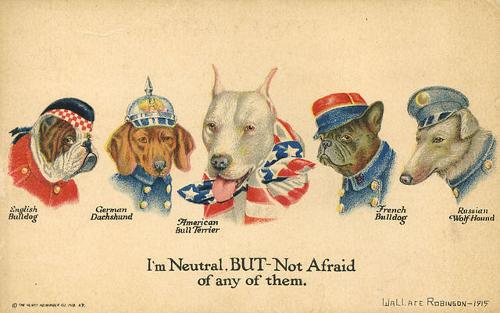 Participant First World War, USAPhoto: Wallace Robinson in the public domain
Participant First World War, USAPhoto: Wallace Robinson in the public domain
Circles outside Wilson were concerned that the balance of power in the world would be disrupted, with consequences for the position of the United States on the world stage.
After years of trench warfare and a completely stuck front, the Americans finally took part in the Great War and Germany was defeated in 1918.
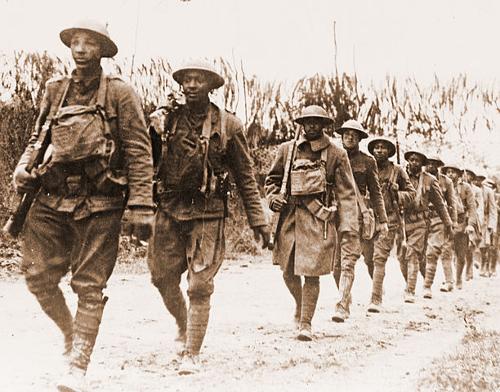 African American infantry troops, USAPhoto: U.S. Army Signal Corps in the public domain
African American infantry troops, USAPhoto: U.S. Army Signal Corps in the public domain
It was now clear that the United States would play a crucial role in world politics from this time on. At the Treaty of Versailles with the Frenchman Clemenceau and the Englishman Lloyd George, Wilson wanted to inextricably link his idea of a League of Nations to the peace treaty.
The majority of the US Senate, on the other hand, feared America's sovereignty, and a compromise between Wilson and the Senate was also impossible. In addition, Wilson was hit by a stroke and a more or less logical consequence was the United States retreating into isolationism under Republican Warren Harding.
Interbellum
After the First World War, the so-called "Roaring Twenties" started, a period in which prosperity struck the clock, but also a period of unrest and uncertainty among young people.
The Republicans remained in power until 1933, but from 1929 onwards they faced an economic crisis that would become the worst ever to occur in the Western world. The Wall Street stock market collapsed and more than 100,000 companies went bankrupt, leaving more than 13 million people unemployed (about 25% of the workforce). Democrat Franklin Delano Roosevelt won the election in 1932 and tackled the economic and social problems with his "New Deal" program. However, the New Deal was not enough to get industry back on track and World War II had to come in to save the US economy.
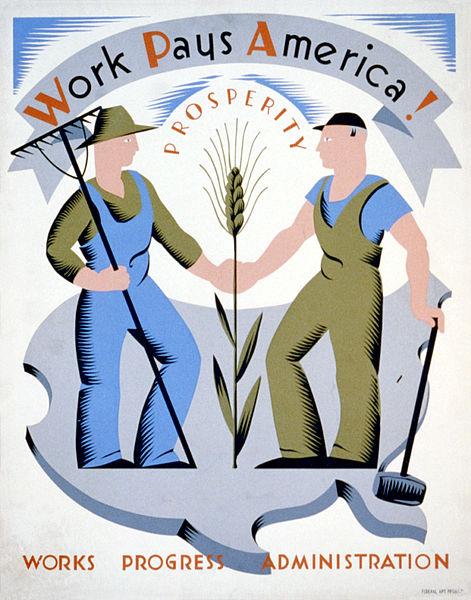 Poster for Works Progress Administration encouraging laborers to work for USA, showing a farmer and a laborer, USAPhoto: Works Progress Administration, Federal Art Project;, designed by Vera Bock in the public domain
Poster for Works Progress Administration encouraging laborers to work for USA, showing a farmer and a laborer, USAPhoto: Works Progress Administration, Federal Art Project;, designed by Vera Bock in the public domain
In his second term in office he tried to tackle isolationism, but it turned out to be too strong, despite the threat that Germany's Adolf Hitler posed again. It was only when the Japanese attacked Pearl Harbor in Hawaii on December 7, 1941 that the United States could no longer remain neutral.
The second World War
It was not long before the Americans fought on all fronts and therefore played a decisive part in the defeat of Germany by the landings in Africa and Italy in 1943, and the decisive attack in Normandy on June 6, 1944 (D-Day). The American militia had already pushed back the Japanese from 1942 after the Battle of Midway. In 1945 Germany and Japan were forced to their knees, Japan only after dropping nuclear bombs on the cities of Hiroshima and Nagasaki. Roosevelt was naturally re-elected president in 1940 and 1944, and he understood that the United States could no longer remain aloof in world politics.
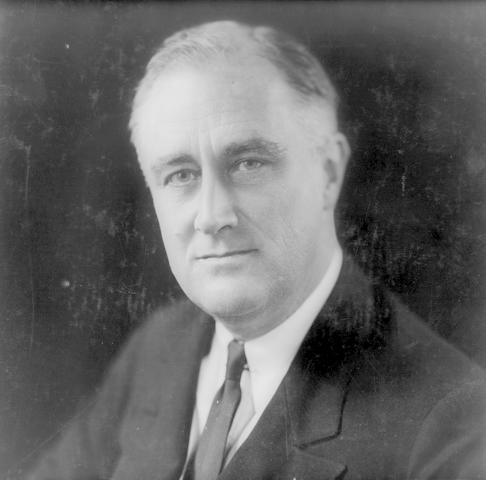 Franklin Delano Roosevelt, 32nd president of the USAPhoto: Unkown in the public domain
Franklin Delano Roosevelt, 32nd president of the USAPhoto: Unkown in the public domain
He too pursued an international organization that would achieve a realistic balance of power between the four major powers, China, Soviet Union, Britain and the United States, and divide the world into four major spheres of influence. Roosevelt died on April 12, 1945.
Post-war developments 1945-1960
Under Roosevelt's successor, Harry S. Truman, relations with the Soviet Union cooled and the so-called Cold War started. The Soviet Union captured Eastern Europe while the Americans provided economic and military aid to the West. In addition, an Atlantic Alliance, NATO, was established. In the Far East, America was the occupying power in Japan, but China was lost, which suddenly became a major enemy after communist Mao Zedong's victory over the pro-American Tjiang K'ai-shek.
In 1950, North Korean communist forces invaded South Korea, and in September, 90% of South Korea was in North Korean hands. The United Nations forces, consisting mainly of American units commanded by General MacArthur, made landings in the back of the North Korean army, which soon collapsed. Chinese volunteers came to the aid of the North Koreans and together they pushed back the forces of the United Nations to about 38th parallel. Negotiations for an armistice began on July 10, 1951, but agreement was not reached until June 13, 1953.
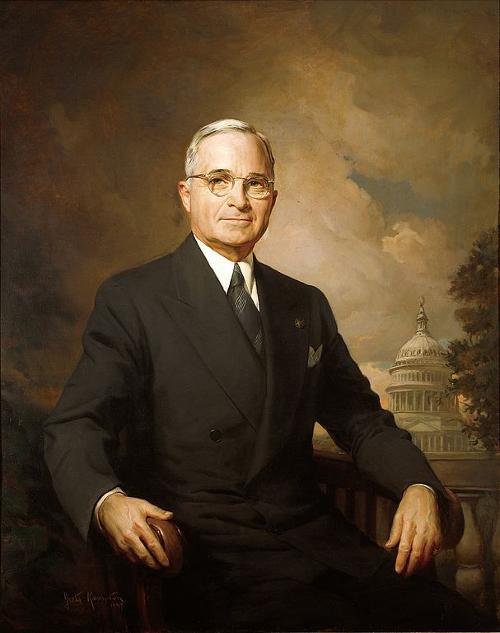 Harry S. Truman, 33rd president of the USAPhoto: Harry S. Truman Library in the public domain
Harry S. Truman, 33rd president of the USAPhoto: Harry S. Truman Library in the public domain
It became clear that while the United States had ensured freedom in much of the world, it was also clear that it was not possible to regulate everywhere in the world. In the United States itself, unimaginable prosperity developed and the economic and technological revolution completely changed the country. Fear of losing this wealth led to fear and feelings of uncertainty. Anti-communism, in particular, was rampant among extremist leaders like Joe McCarthy with his communist hunt among “leftist” intellectuals. Ultimately it would appear that extreme right-wing and left-wing politics could never thrive in American soil. The Democratic coalition of cities, ethnic minorities, intellectuals and blacks therefore remained in the majority until 1952.
In that year, Truman was succeeded by Republican Dwight D. Eisenhower, but the majority of Congress remained democratic. The fifties went on rather quietly. The "containment" policy (communism had to be kept under control inside and outside America) against the communist world continued and in the interior the problems between the different races became increasingly prominent, partly due to the emancipation of the black population itself.
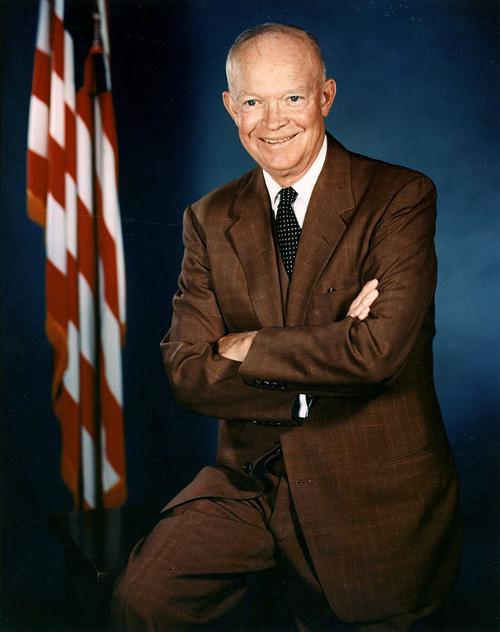 Dwight D. Eisenhower, 34th president of the USAPhoto: White House in the public domain
Dwight D. Eisenhower, 34th president of the USAPhoto: White House in the public domain
In the segregated southern United States, votes emerged in the 1950s to end the segregation of whites and blacks. For example, in 1954 the segregation of schools was officially abolished, although not much has changed in practice. In 1955, a black woman refused to give up her seat on a bus to a white woman. She was arrested and her case was taken over by Martin Luther King Jr., who later became one of the primary advocates for equal rights for white and black.
A major protest march was organized in the capital Washington in 1963. In 1964, among other things, the Civil Rights Act came into force, which gave equal rights to blacks in many areas throughout the United States.
The crisis of the 1960s
Democrat John F. Kennedy entered the White House in 1961 and his youthful demeanor sparked great optimism. However, he was very inexperienced and created a number of explosive situations. For example, in April 1961, an invasion of Cuban exiles (supported by the United States) into the Bay of Pigs in Cuba, as planned by the American intelligence agency CIA, took place. However, this attack against the rule of the communist Cuban Prime Minister Castro failed completely. October 1962 saw a very serious conflict with the Soviet Union, which wanted to deploy missiles in Cuba.
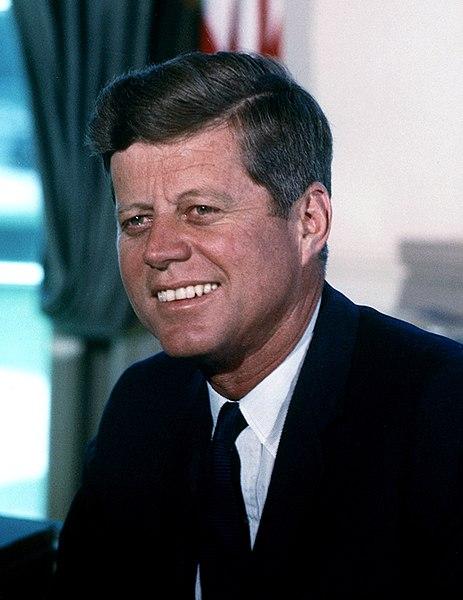 John F. Kennedy, 35th president of the USAPhoto: Cecil Stoughton, White House in the public domain
John F. Kennedy, 35th president of the USAPhoto: Cecil Stoughton, White House in the public domain
In August 1963, a treaty was signed with the Soviet Union and Great Britain to ban above-ground nuclear tests. On November 22, 1963, President Kennedy was assassinated in Dallas, Texas, and it shocked the world.
Vietnam War
Around this time, the United States became increasingly entangled in the Vietnamese conflict. At the end of 1963, 16,000 American "advisers" were already present in that country. On August 2, 1964, Kennedy's successor, Vice President Lyndon B. Johnson, made the decision to bomb North Vietnamese naval bases and oil repositories in response to the United States-induced incident in the Gulf of Tonkin.
In four years, the strength of the United States in Vietnam rose to more than 550,000 men. The increasingly violent air raids on North Vietnam provoked sharp protests, both abroad and in the United States. After President Johnson halted the bombings in March 1968, negotiations began in Paris on May 13 involving the United States, South Vietnam, North Vietnam, and the Vietnamese National Liberation Front (N.L.F.).
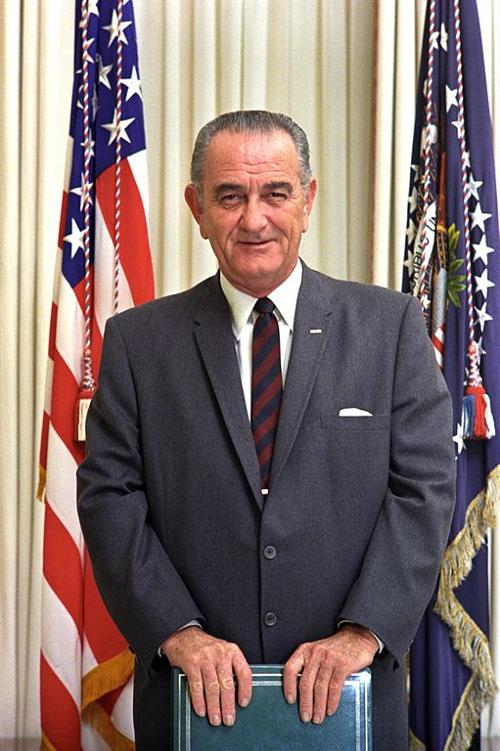 Lyndon B. Johnson, 36th president of the USAPhoto: BdiYoichi Okamoto in the public domain
Lyndon B. Johnson, 36th president of the USAPhoto: BdiYoichi Okamoto in the public domain
However, this yielded little and in 1968 the so-called Tet offensive was started by N.L.F. and North Vietnamese troops in key cities and bases in South Vietnam and US losses were high. In June 1969, Johnson's successor, Richard M. Nixon, announced that the withdrawal of US troops from South Vietnam would soon begin and that North and South Vietnam should find out for themselves. In March 1972, there were only 60,000 US ground troops in South Vietnam, but they no longer participated in the acts of war; however, the bombing of North Vietnam continued in December 1971 and intensified again in April 1972.
After the resumption of the Paris negotiations in May 1972, a draft agreement was concluded in October providing for an immediate ceasefire and readiness to negotiate between the warring parties.
The United States would end all military actions and withdraw its forces immediately after signing. The signing of the agreement has been made conditional by the United States on the fulfillment of a number of new requirements, such as the recognition of 17th latitude as a provisional political divide. The recognition of the sovereignty of South Vietnam and the withdrawal of North Vietnamese troops from South Vietnam. When North Vietnam did not respond to this, massive bombings of the major North Vietnamese cities took place on behalf of President Nixon from 18 to 30 December. As a result, much of the world's public opinion turned violently against the United States.
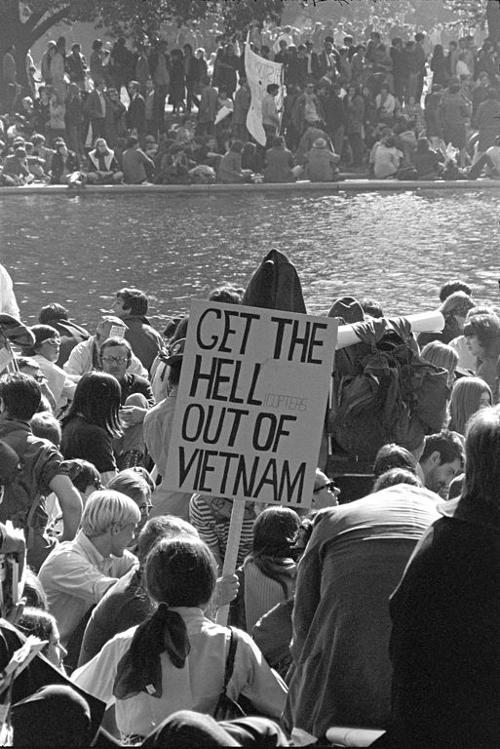 Protest against the presence of the USA in VietnamPhoto: Frank Wolfe, Lyndon B. Johnson Library in the public domain
Protest against the presence of the USA in VietnamPhoto: Frank Wolfe, Lyndon B. Johnson Library in the public domain
On January 23, 1973, Secretary of State Henry Kissinger and North Vietnamese delegate Le Duc Tho signed the so-called Paris Accords, officially ending the Vietnam War, which, with brief interruptions, since the French reconquest of Saigon had lasted more than 27 years in 1945. The last US troops withdrew in March 1973.
In hindsight, the Vietnam War became the greatest embarrassment for the United States in a long time. In 1973, the country had to withdrawy in disgrace, leaving the fight to the ill-trained South Vietnamese army.
In the United States itself, politics slowly lost its grip on society: problems with the black population, poverty, youth unrest and violent resistance in universities, and violence and crime in general. Johnson had won the presidential election in 1964, but decided not to stand for re-election in March 1968. Democratic leader Robert Kennedy was assassinated during the election campaign and Republican candidate Richard M. Nixon managed to win by a minute majority over Democrat Hubert Humphrey.
The seventies
Under Nixon, the United States made overtures to China in 1971 and to the Soviet Union in 1972. Internally, Nixon tried to calm the contradictions among the population through a moderately conservative course. In November 1972, he won the election against his Democratic opponent George McGovern by an overwhelming majority. The end of the Vietnam War was the last highlight of his reign that crumbled at a rapid pace shortly thereafter, notably through the Watergate affair involving the White House. It was a series of political and financial scandals that eventually led to the resignation of President Nixon.
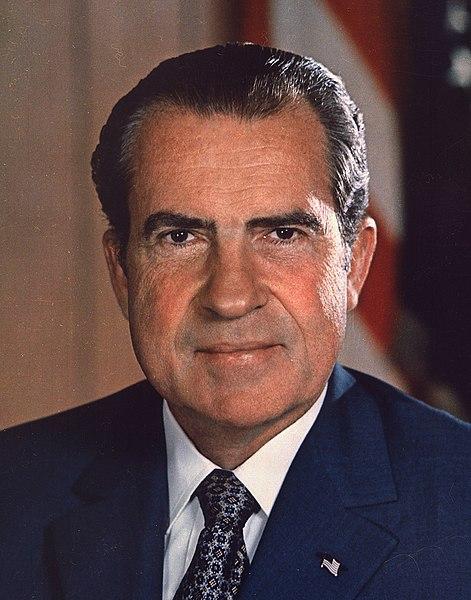 Richard Milhous Nixon, 37th president of the USAPhoto: Department of Defense in the public domain
Richard Milhous Nixon, 37th president of the USAPhoto: Department of Defense in the public domain
In June 1972, during the election campaign for the presidency, a burglary was made at the Democratic Party headquarters in the Watergate building complex in Washington for the purpose of installing eavesdropping devices. It turned out to be part of a complex of Republican practices to damage the Democratic Party and secure the re-election of President Nixon. Later, the Republican Party's corruption of electoral money was uncovered, White House secret lists of political opponents whose phones were tapped and smear campaigns against Democratic presidential candidates and burglaries organized.
After the House of Representatives judicial committee recommended impeachment on July 27 and Nixon himself admitted by a startling statement on August 5 his involvement in the scandal, his position proved unsustainable. He resigned on August 9, 1974 and was succeeded by Vice President Gerald Ford.
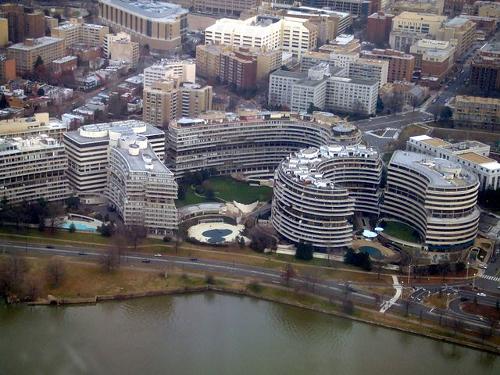 Watergate complex from the air, USAPhoto: Indutiomarus in the public domain
Watergate complex from the air, USAPhoto: Indutiomarus in the public domain
Under his rule, the country calmed down more or less and national contradictions diminished. In 1976, Ford was succeeded by Georgia Democrat Jimmy Carter. He, too, was not a great leader who could inspire the American people, and had great problems with Congress. His major triumphs were in the field of foreign policy. In particular, the reconciliation of Israel and Egypt in the Camp David Accords was a personal triumph.
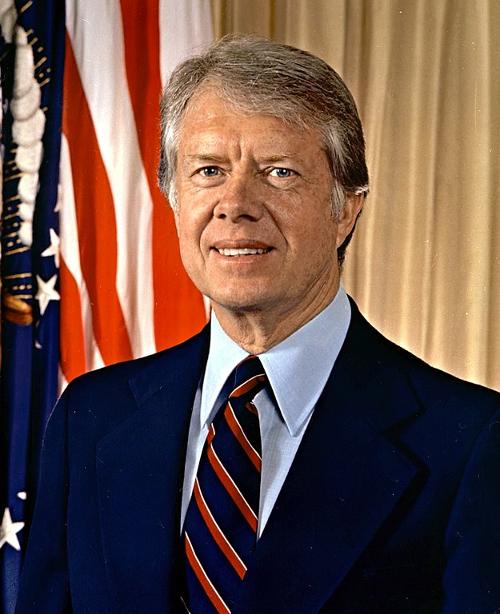 Jimmy Carter, 39th president of the USAPhoto: Department of Defense. Department of the Navy. Naval Photographic Center in the public domain
Jimmy Carter, 39th president of the USAPhoto: Department of Defense. Department of the Navy. Naval Photographic Center in the public domain
The reputation of Carter and the United States was again severely tested in 1979 and 1980. In Iran, the Shah's pro-American government fell and was succeeded by a fundamentalist-Islamic regime of clergy. To make matters worse, 52 staff members of the United States Embassy were taken hostage in November 1979 and released only a year later, exactly on the day of the inauguration of the new President, Conservative Republican Ronald Reagan.
The eighties
Reagan was reelected in 1984, and under his administration the federal government bureaucracy was reduced and massive tax cuts were made. However, defense spending rose so much that a huge budget deficit nevertheless arose that affected those who depended on social care.
Reagan was also a real “containment” fan, aimed at reducing communism in Grenada, El Salvador and Nicaragua, among others.
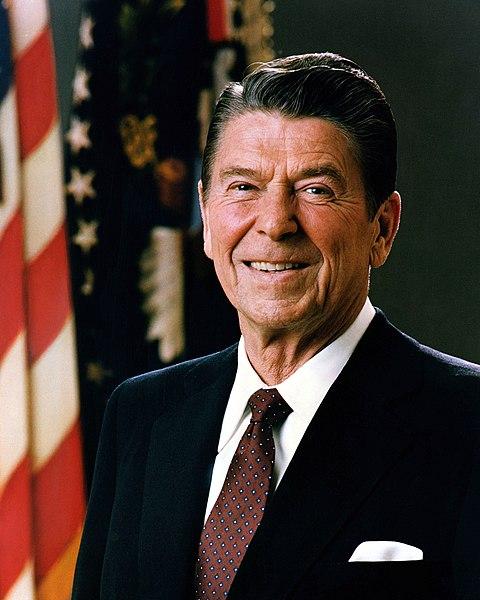 Ronald Reagan, 40th president of the USAPhoto: Unknown author in the public domain
Ronald Reagan, 40th president of the USAPhoto: Unknown author in the public domain
He pursued a hard line against the Soviets that thawed only when Mikhail Gorbachev came to power in the Soviet Union, pursuing a policy of glasnost (openness) and perestroika (change). Discussions between the two superpowers led to far-reaching weapon control agreements (SALT and START agreements).
In 1986, the so-called Iran-Contra affair came to light, in which the United States illegally sold weapons to Iran and used the proceeds to finance resistance to the leftist government of Nicaragua.
The Bush administration (1988-1992)
The November 1988 elections were won by Reagan's vice president, George Bush. In Congress, on the other hand, Democrats tightened their majority in both houses.
In 1989, total world politics would be turned upside down by the upheaval in Eastern Europe, so that the United States no longer had to worry about reducing the communist sphere of influence. Bush and Gorbachev formally ended the Cold War at the Summit in Malta in December 1989. This led directly to the break-up of the Soviet Union, liberating all of Eastern Europe from communist regimes. In the same year, Bush decided to invade Panama to overthrow the regime of dictator and drug trafficker Manuel Noriega.
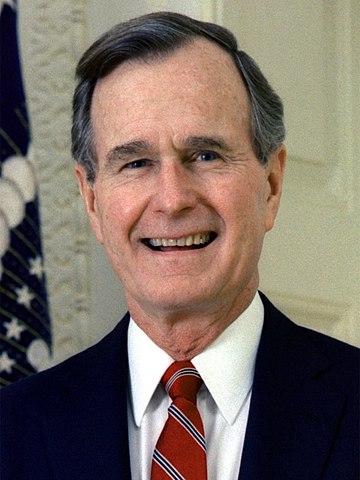 George Bush 41st president of the USAPhoto: Unknown author in the public domain
George Bush 41st president of the USAPhoto: Unknown author in the public domain
Because the balance between the two superpowers fell away, new sources of fire arose all over the world. For example, Iraq invaded Kuwait in 1990, leading to the first Gulf War. In the interior, economic and social policies were not very focused on the economically weak, leading to deteriorating living conditions for the black population, leading to much violence and unrest.
The Clinton administration (first term in office)
The 1992 presidential election was won by Democratic candidate Bill Clinton and he became the 42nd President of the United States. The majority in Congress was once again Democratic. In the first week of January 1993, President Bush and his Russian counterpart Yeltsin, who was still in office, concluded a nuclear weapons deal, START II, which required Russia and the United States to drastically reduce the number of long-range nuclear weapons in ten years.
At the end of February of that year, a car bomb exploded in the parking garage under one of the two towers of the New York World Trade Center; six people were killed and more than a thousand injured. In 1994, Clinton was troubled by the Whitewater affair (financial transactions during his Arkansas governorship) and the charge of sexual harassment by former Arkansas employee Paula Jones.
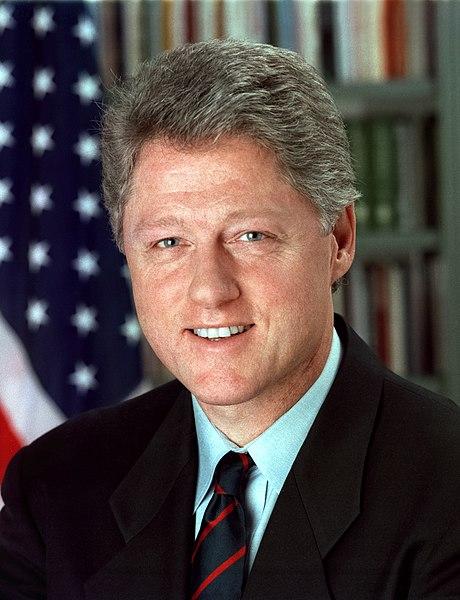 Bill Clinton, 42nd president of the USAPhoto: Bob McNeely, The White House in the public domain
Bill Clinton, 42nd president of the USAPhoto: Bob McNeely, The White House in the public domain
Also in February, economic sanctions against Vietnam were lifted and prompted the United States to impose sanctions on North Korea, which refused to allow investigators from the international nuclear agency IAEA to nuclear facilities. In June, the North Koreans stepped out of the IAEA and threatened war, but former President Carter managed to persuade the North Koreans to halt their nuclear weapons programs.
As for the war in Bosnia, the United States called for stronger action against the Serbs and the lifting of the arms embargo against Muslims. In December 1994, after another mediation by Carter, a ceasefire was established. In August 1995, Clinton vetoed a bill to unilaterally lift the arms embargo on Bosnia. In November, after difficult talks in Dayton, Ohio, a peace treaty was concluded between the presidents of Bosnia, Serbia and Croatia.
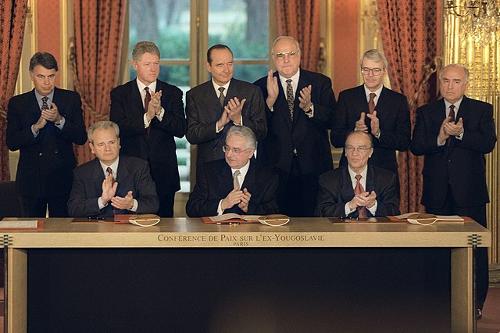 Negotiators Dayton Agreement, USAPhoto: NATO in the public domain
Negotiators Dayton Agreement, USAPhoto: NATO in the public domain
A few months earlier, the state of war between Israel (Rabin) and Jordan (Hussein), which had existed since 1948, had already ended.
In July 1994, among others, congressional elections were held that turned out disastrously for the Democratic Party. She lost the majority in both houses of Congress for the first time since 1954. Of the 50 states, 31 fell to Republicans and 18 to Democrats.
The economy developed well in that year with inflation rates of less than 2% and a budget deficit that was lowest in five years. That the elections were nevertheless lost was due to the fact that most people hardly felt the economic recovery. The business community remediated on a large scale, causing many people to end up on the street. The soft policy towards immigrants, criminals and other minorities also played tricks on the Democrats.
An agreement was reached with Japan in October 1994, with Japan pledging to address trade restrictions on telecommunications, insurance and medical devices, among others.
Due to the new balance of power in Congress, bills were rarely passed by both houses in 1995 and time-consuming compromises were needed between the White House and the Senate. In June, the Clintons were acquitted of dubious conduct regarding the Whitewater affair, and in October the Muslim fundamentalist suspects were found guilty of the World Trade Center attack and sentenced to lengthy prison terms. The Egyptian leader of the group, Omar Abdel Rahman, was sentenced to life.
 Protesters wanted Omar Abdel Rhaman to be free, USAPhoto: Lilian Wagdy CC 2.0 Generic no changes made
Protesters wanted Omar Abdel Rhaman to be free, USAPhoto: Lilian Wagdy CC 2.0 Generic no changes made
1995 was also the year of the great conflict between the Clinton administration and the Republican-controlled Congress on the 1996 budget. As a result of the deadlock, hundreds of thousands of officials were declared inactive at the end of 1995. The dispute was settled in early 1996 and the officials were able to return to work.
Under the American leadership, the Dayton Peace Agreement was concluded in late 1995. Bosnia was divided into a Serb and Muslim-Croat section and a large international force, including 20,000 US military personnel, ensured that the file was observed.
In August the 1935 Welfare Act was thoroughly revised; the implementation of this law was delegated to the individual States. In the fall, a new immigration law was passed that governed the rights and obligations of refugees and asylum seekers.
President Clinton and his wife Hillary, meanwhile, continued to face the Whitewater affair and the "Paula Jones" case, which accused Clinton of sexual harassment when he was still governor of Arkansas.
Clinton's second term of office
In March 1996, the Helms-Burton Act was passed, which threatened to sanction foreign companies if they did trade with Cuba. In June 1996, Clinton pushed for an international approach to terrorism, but did not get European countries caught up in American foreign policy towards Libya and Iran.
The relationship with China also came under severe pressure this year. Export credits of America were terminated due to the Chinese supply of nuclear technology to Pakistan and China. China then threatened to pass American companies in favor of European companies after the Americans' continued criticism of China's human rights issues. The 1996 elections were again won by Clinton and his vice-president Al Gore, but Republicans continued to hold their majority in Congress.
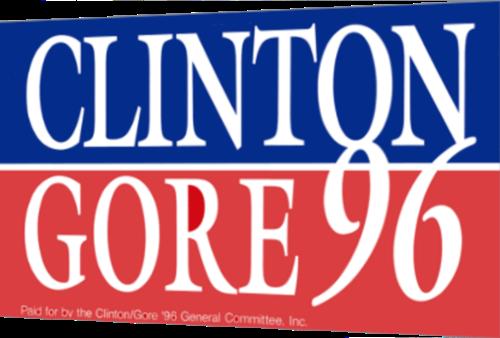 Flag presidential campaign Bill Clinton and Al Gore, USAPhoto: Bill Clinton presidential campaign, 1996 in the public domain
Flag presidential campaign Bill Clinton and Al Gore, USAPhoto: Bill Clinton presidential campaign, 1996 in the public domain
The economy continued to pick up in 1996: unemployment fell to around 5% and GDP rose by 2.4%. Clinton continued to be haunt in 1997 with the Paula Jones and Whitewater affairs. In addition came, the Monica Lewinsky case, which would almost ensure that Clinton was impeached, through a so-called impeachment procedure. Clinton would have lied that he had sex with his intern Monica Lewinsky. The impeachment procedure was actually initiated by the Republicans, but the procedure ended on February 12, 1999 with an acquittal pronounced by the Senate.
In March 1997, Clinton and Russian President Yeltsin discussed nuclear weapons reduction and the relationship between NATO and the Russian Federation again. The defense treaty was revised with Japan, but America was allowed to retain its military base on the Japanese island of Okinawa.
Tensions between America and Iraq rose again in October 1997 when Iraq expelled American members of the UN Disarmament Commission from the country and threatened to take down American reconnaissance aircraft. The United States now found the time to intervene but received no support from the UN Security Council.
In the same month, relations with Israel bottomed out, following Prime Minister Netanyahu's refusal to honor the peace agreements with the Palestinians of 1993 and 1995. A year later, an agreement was reached on further Israeli withdrawals from occupied Palestinian territory.
Relations with China improved despite Clinton's criticism of human rights policy, notably for Chinese television. In October 1997, Clinton and Chinese President Jiang Zemin entered into a number of political and economic agreements.
Politically, this black episode in Clinton's life didn't end so badly. In midterm elections, Republicans suffered defeat against Democrats, with the Republican majority in the House even dropping and the number of Republican governors dropping by one from 32 to 31.
Noteworthy was the great victory of Republican Senator George Bush of Texas, son of former President Bush, and tipped as a presidential candidate for the 2000 presidential election.
In August 1998, bomb attacks were carried out simultaneously at the American embassies in Tanzania and Kenya. Tens of people were killed, including 12 Americans. Saudi terrorist Osama bin Laden was thought to be the mastermind behind the attack, which would operate from Afghanistan. As a measure of retaliation, the United States, despite much criticism, carried out missile attacks on Afghanistan and a suspected chemical plant in Sudan.
 Embassy of the USA in Dar es Salaam, Tanzania, in the aftermath of the August 7, 1998, after al-Qaida suicide bombingPhoto: DS Records in the public domain
Embassy of the USA in Dar es Salaam, Tanzania, in the aftermath of the August 7, 1998, after al-Qaida suicide bombingPhoto: DS Records in the public domain
UN weapons inspectors were expelled from Iraq by Saddam Hussein at the end of October 1998, but were able to return after being condemned by the five permanent members of the Security Council. In December, however, they were again hindered in their work and that was the signal for the United States and Great Britain to attack Iraq (Operation Desert Fox or Second Gulf War). Hundreds of bombings and more than 400 cruise missiles were fired at Iraqi military targets and facilities where Iraq could produce nuclear, chemical or biological weapons. However, all this did not lead to the fall of Saddam Hussein.
In 1998, the United States also intervened in the Kosovo crisis, where President Milosevic's Serbs and Kosovar insurgents fought a bloody battle. Heavy pressure from the Americans and negotiations with both parties came to nothing. The peace plan that emerged from a conference on Kosovo (Rambouillet, February 1999) provided Kosovo's self-government for an interim period of three years, overseen by a NATO peacekeeping force. However, Serbia (read: Milosevic) disagreed with the proposals, after which NATO began bombing Serbian and Kosovar military targets in late March. On June 9, 1999, Milosevic pledged to withdraw his troops from Kosovo, partly because of Clinton's threat to deploy ground troops.
The war initially cooled relations with Russia, but in the end Russia even played the role of mediator and also participated in the UN peacekeeping force, KFOR. Relations with China were also on the back burner after an attack on the Chinese embassy in Belgrade, which left three dead.
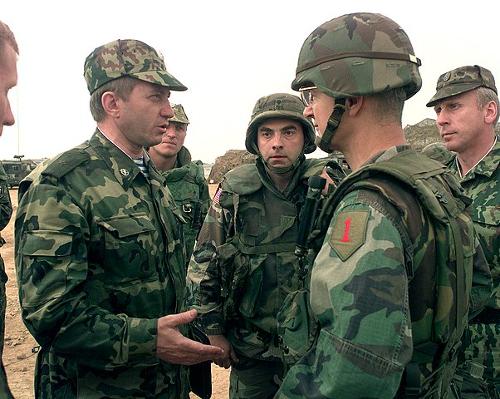 American and Russian armed forces in Kosovo, USAPhoto: Spc. Christina Ann Horne (U.S. Army) in the public domain
American and Russian armed forces in Kosovo, USAPhoto: Spc. Christina Ann Horne (U.S. Army) in the public domain
Relations with China remained highly strained in 1999 due to the Taiwan issue and the conditions for Chinese accession to the World Trade Organization (WHO). The WHO negotiations were very difficult and only in September 1999 did both countries agree on the conditions for accession. In June, the Americans had already successfully brokered a new diplomatic conflict between Taiwan and China. Even a genuine espionage conflict over the production of nuclear weapons could not harm "good" relations between the United States and China. On December 14, 1999, sovereignty over the Panama Canal was officially transferred to Panama.
The presidential elections also cast their shadows in 1999 through the primaries. After the last primaries on March 7, 2000, George Bush remained for the Republicans and Al Gore for the Democrats as presidential candidates. After a long period of uncertainty following the November 7, 2000 elections, Texas Governor George W. Bush was declared the winner in mid-December. On January 20, 2001, Bush took the oath as the 43rd President of the United States. He was the first president in a very long time to win the majority of electoral votes per state (electoral vote), but not the majority of all popular votes.
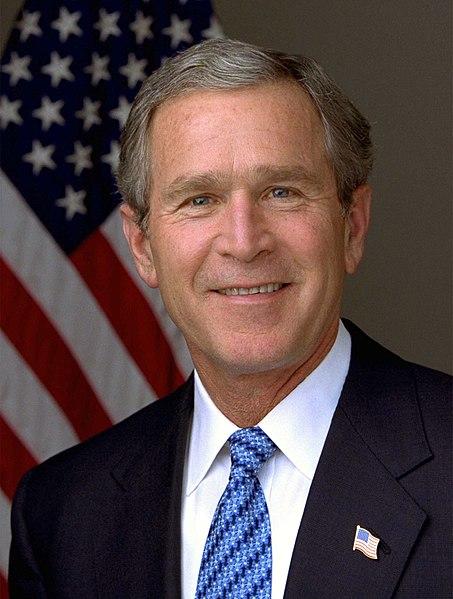 George W. Bush, 43rd president of the USAPhoto: White house photo by Eric Draper in the public domain
George W. Bush, 43rd president of the USAPhoto: White house photo by Eric Draper in the public domain
Attack on America and war in Afghanistan
On September 11, 2001, terrorist attacks with hijacked passenger planes took place at the Twin Towers of the World Trade Center at the southern tip of Manhattan, New York and at the Pentagon in Washington. Both towers completely collapsed after about an hour, and thousands of people from 62 countries were killed, including all occupants in the aircraft used for the attack. The attacks were not claimed by any organization, but it was generally believed that the Saudi Osama bin Laden was behind it. Bin Laden is said to be hidden in Afghanistan, but the Taliban regime did not wish to extradite him.
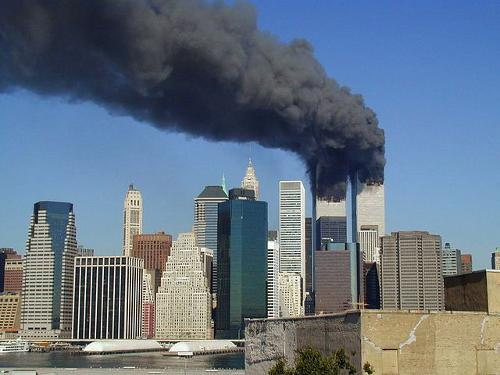 Attack on the Twin Towers, USAPhoto: Michael Foran CC2.0 Generic no changes made
Attack on the Twin Towers, USAPhoto: Michael Foran CC2.0 Generic no changes made
The United States viewed the attacks as a direct declaration of war on the country, and in turn declared war on terrorism and the states that hid terrorists such as Afghanistan, supported by NATO. In September / October 2001, several people in the United States also became infected with the anthrax bacteria.
In Afghanistan, the Taliban regime was preparing for war. The United States was allowed to operate from Pakistani territory, and American and British troops were stationed in the region. The US bombing of targets in Afghanistan began on October 7. Mid-November saw the first major successes, the capital Kabul fell to the Northern Front, and the important city of Kandahar fell to the opposition. Despite everything, Osama bin Laden was not found. At the diplomatic level, a lot of hard work has been done to create a transitional government.
Stock prices fell sharply immediately after the attack, particularly those of airlines and related companies. One month after the attack, 200,000 Americans had lost their jobs.
War with Iraq again
On November 8, 2002, the Security Council adopted Resolution 1441. Iraq will have a last chance to disarm and grant inspectors unimpeded access. The resolution states that refusal will have "grave consequences" for Iraq if the country again declined to cooperate in the implementation of this and earlier resolutions. UN weapons inspectors subsequently launched investigations into the presence of weapons of mass destruction in Iraq. Weapon inspections are resumed on 27 November under the leadership of Swedish UN diplomat Blix.
However, the members of the Security Council were unable to reach a common position. A number of countries wanted to give weapons inspectors even more time in early March 2003. But America and Great Britain in particular felt that Iraq had lost the 'last chance'.
Shortly thereafter, on the night of Wednesday to Thursday, March 20, 2003, President Bush announced the beginning of the war against Iraq. The war started with a precision attack on Saddam Hussein. In the evening, Americans and British launched the ground attack in southern Iraq, and the following day, the capital, Baghdad, was rocketed. The first Allied soldiers were killed in a helicopter accident. Saturday, March 22, heavy bombings of the cities of Baghdad, Kirkuk, Umm Qasr and Basra followed again, after which thousands of Iraqi soldiers surrendered. A day later, the first Allies were taken prisoner of war.
On Tuesday March 25, the advance was halted by heavy sandstorms, but the aerial bombardments continued. Umm Qasr is declared free and the first aid goods arrived there. Friday, March 28, it was announced that large parts of western Iraq had been taken by US commandos. The first fighting near Baghdad was reported on Monday, March 31, and British troops entered the southern city of Basra. On Wednesday, April 2, the Americans were 30 kilometers from Baghdad and a day later troops advanced to Saddam Hussein International Airport near Baghdad. Iraq's expected use of chemical weapons was still out of the question.
On Saturday April 5, American tanks "explored" the center of Baghdad without any problems and a day later the first American planes landed at the international airport. British troops penetrated into the center of Basra. On Monday April 7, the Allies delivered a number of psychological blows to the Iraqis: one of Saddam Hussein's palaces was occupied and Ali Hassan al-Majid, aka "Ali Chemicali", was found dead. He was the Iraqi WMD specialist. President Bush and British Prime Minister Blair met in Northern Ireland.
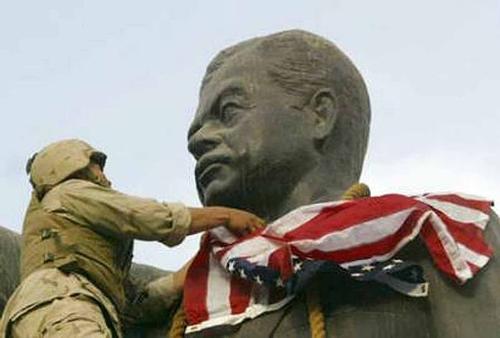 Reign Saddam Hussein endedPhoto: Unknown author, in the public domain
Reign Saddam Hussein endedPhoto: Unknown author, in the public domain
On the night of Tuesday to Wednesday, April 9, US troops remained in the center of Baghdad. On Wednesday, the Iraqi people in Baghdad learned that Saddam Hussein's regime had actually been toppled, and fear turned into enthusiasm. In the center of Baghdad, Americans drew a statue of Saddam Hussein to the great cheer of the Iraqis.
2004-2008
The domestic political discussions in Congress are largely determined by the attacks in New York and the Pentagon in 2001 ("9/11") and the domestic economy. Strong emphasis is placed on topics such as counterterrorism, economy and employment, (reduction of) taxes, energy policy and social security (aging, health care). The elections in November 2004 produced Republican majorities in the Senate and House of Representatives, putting the government firmly in the saddle until the November 2, 2008 presidential election. The government is (neo) conservative. After the conflict with Iraq the focus is expected to be primarily on the economic situation and other domestic issues close to the average American.
In November 2006, new elections were held for Congress and the Senate. In these elections, Democrats have won the majority in both Congress and the Senate. In March 2008, John McCain (war veteran) is nominated to run for the presidential election for Republicans, and in June Barack Obama decides the fight for democratic nomination in his favor against Hillary Clinton. In November 2008, Barack Obama defeats John McCain and will become the first black president of the United States.
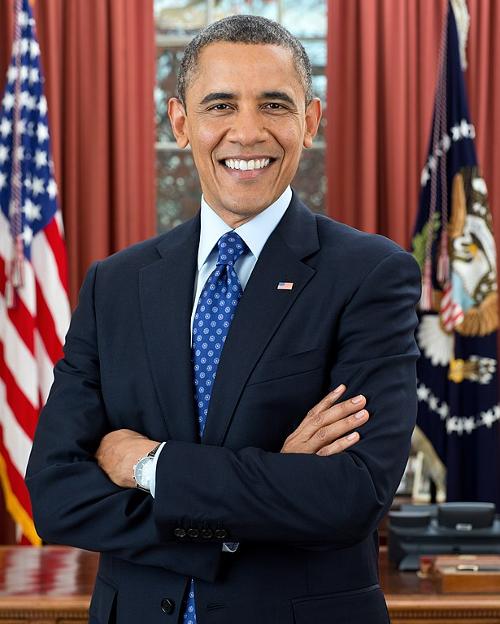 Barack Obama, first black president of the USAPhoto: Official White House Photo by Pete Souza in the public domain
Barack Obama, first black president of the USAPhoto: Official White House Photo by Pete Souza in the public domain
The Obama administration
In January 2009, Obama was sworn in as President of the United States and immediately proposes to pump $ 800 billion into the economy, and in February 2009, Congress largely approves. The US emerged from recession in November 2009. In March 2010, Obama piloted a new health care reform system through Congress, despite strong opposition from Republicans. In May 2010, an oil spill occurred in the Gulf of Mexico. In May 2011, commandos manage to kill Al-Queda leader Osa Bin Laden.
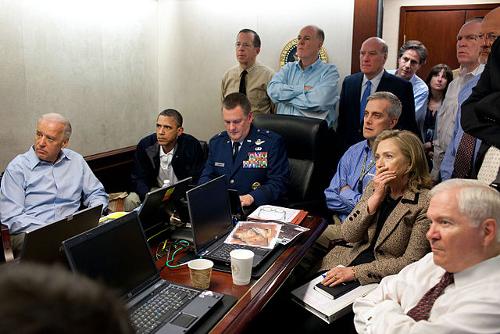 President Barack Obama watches capture Osama Bin LadenPhoto: Pete Souza, Official White House Photographer in the public domain
President Barack Obama watches capture Osama Bin LadenPhoto: Pete Souza, Official White House Photographer in the public domain
Obama was reelected to the 2012 United States presidential election by beating Republican candidate Mitt Romney by a wide margin in terms of electoral votes. He is the first Democratic candidate since Franklin D. Roosevelt to win two consecutive presidential elections by a majority of preference votes. In 2013, Democrats and Republicans are fighting with each other over public finances. A provisional agreement will be reached in 2014. In April 2014, the US and the EU announced sanctions against Russia for the annexation of Crimea and Russian interference with Ukraine. In November, Republicans win a majority in the Senate, thereby gaining a majority in both Congress and Senate.
In March 2015, President Obama announced that US advisers will remain in Afghanistan for the time being. In July 2015, Cuba and the United States mutually reopen their embassies, a huge step forward in normalizing relations. In 2016, there were many attacks by the Islamic State, including a gay club in Orlando. The United States is preparing for the November 2016 presidential election. Hillary Clinton is a candidate for Democrats and Donald Trump is a candidate for Republicans.
The Trump administration
To the surprise of almost everyone, Donald Trump wins the presidential election in November 2016. He will perform under the slogan America First in January 2017. In April 2017, the US bombs a Syrian air base and decides to arm Kurdish forces in the fight against Islamic State. President Trump warns North Korea that it may face military reprisals if it continues its nuclear program. In May 2017, Trump fires FBI director James Comey, and concerns arise about interference by the Russians in last November's elections.
In August 2017, Trump becomes discredited when he laxly responds to violence in Charlottesville caused by the far right. In late 2017, tension with North Korea mounts, and Trump says on Twitter that he has a bigger red button than North Korea. In January 2018, it is announced that the Dutch intelligence service has had a large share in the evidence surrounding the Russian interference in the American elections. The AIVD has caught a Russian hacker group red-handed.
 Donald J. Trump 45th President of the USAPhoto: Shealah Craighead in the public domain
Donald J. Trump 45th President of the USAPhoto: Shealah Craighead in the public domain
In April 2018, the United States and China start a trade war, with import duties of up to 25%. Trump meets North Korean leader Kin Jong-un in Singapore in June and tensions seem to be easing somewhat, but a real breakthrough is not coming. In the November 2018 elections, Democrats obtain a majority in the House of Representatives. In March 2019, the Mueller report concludes that there is no convincing evidence of Russian interference in the election of Donald Trump. President Trump, meanwhile, mainly communicates via the social medium Twitter. In March 2020, a state of emergency will be declared in the United States due to the Covid-19 pandemic. Trump initially downplayed the nature and extent of the pandemic, but today the United States is the most affected country.
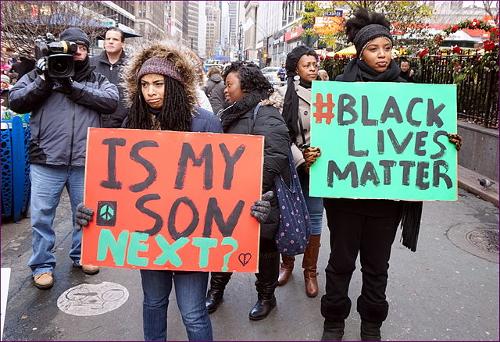 Demontsration Black Lives Matter in USAPhoto:The All-Nite Images CC 2.0 Generic no changes made
Demontsration Black Lives Matter in USAPhoto:The All-Nite Images CC 2.0 Generic no changes made
In May 2020, African-American Georg Floyd was killed in extreme police brutality. The whole world is captivated by this event and a worldwide "Black lives matter" movement arises.
The Joe Biden administration
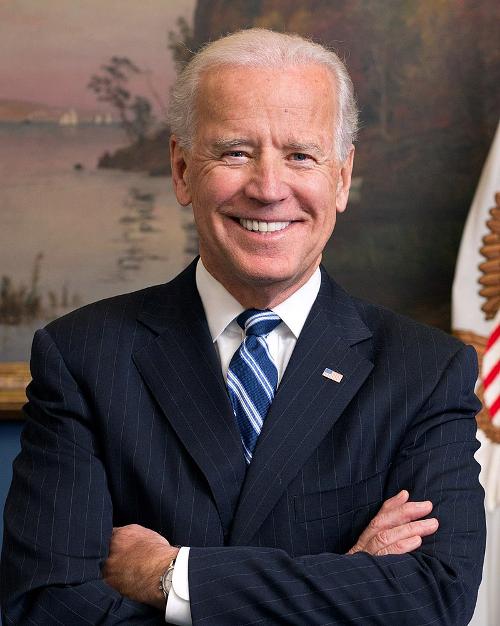 Joe Biden 46th President of the USAPhoto: The white house in the public domain
Joe Biden 46th President of the USAPhoto: The white house in the public domain
In November 2020, Democrat Joe Biden beats incumbent President Trump, who is struggling to acknowledge his loss. After a chaotic intervening period, culminating in the violent storming of the Capitol by Trump supporters, Joe Biden will be inaugurated as president on January 20, 2021. His vice president is Kamala Harris, the first woman to hold this position. Biden's first priorities are to fight the Covid pandemic, strengthen national unity and re-establish diplomatic ties. He wants, among other things, to reverse the withdrawal of the United States from the Paris climate agreement and the withdrawal from the WHO.The Covid-19 pandemic is causing many victims in the United States. By early 2022, the 1 million casualty mark is nearly reached. In February 2022, the USA sends additional troops to Poland because of rising tensions with Russia over the conflict over Ukraine.
Donald J. Trump won the 2024 U.S. presidential election and returned to the White House for a second term on Jan. 20, 2025. He defeated Democratic candidate Kamala Harris by 312 electoral votes to 226, gaining 49.8% of the popular vote versus Harris' 48.3%. This victory makes Trump the second president in U.S. history to serve non-consecutive terms, after Grover Cleveland. His campaign focused on economic issues, immigration and restoring American power on the world stage. His victory is seen as a response to voter dissatisfaction with inflation and post-pandemic economic challenges.
Trump's re-election led to a shift to the right in American politics, with a strengthened Republican majority in the Senate and a possible majority in the House of Representatives. His policies immediately, through immediate executive orders he signed, affected domestic and foreign affairs, including trade, immigration and the U.S. role in international alliances.
Sources
Phillipson, O. / USA
Heinemann Library
Sandak, C.R. / Verenigde Staten van Amerika
Corona
Stanic, S. / De Verenigde Staten
Schuyt & Co
Supermachten
Stichting Teleac 1: Verenigde Staten van Amerika
Verenigde Staten
Uitgeversmaatschappij The Reader’s Digest NV
Webb, M. / The United States
Lucent Books
CIA - World Factbook
BBC - Country Profiles
Last updated June 2025Copyright: Team The World of Info